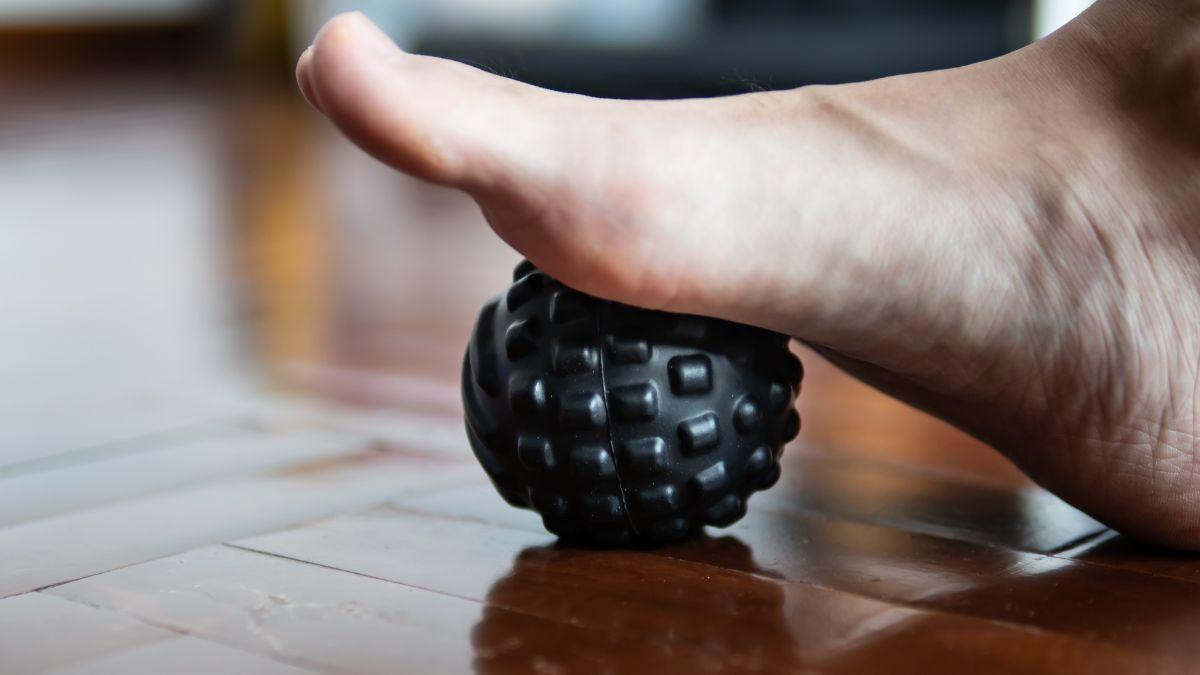What is plantar fasciitis?
The band that connects the calcaneus (heel) to the toes on the bottom of the foot is called the plantar fascia. Plantar fasciitis, (also known as plantar fascia), is an injury of the connective tissue band on the bottom of the feet. This condition accounts for approximately 11-15% of all foot injuries (1). There are several factors that can contribute to the development of plantar fasciitis but there are some predominant reasons why it occurs.
What are the main causes?
The main cause of plantar fasciitis in runners is often overuse of the plantar fascia, especially when you increase the amount or intensity of exercise you do. Regular microtrauma or repeated overload stress to the fascia from overuse may cause plantar fasciitis. The condition is especially prevalent in runners, affecting up to 17.4% of the running population (1). Persistent standing, excess foot pronation (foot rolling in), and poor ankle dorsiflexion (lifting your foot towards your shin) are other risk factors that may cause damage to the plantar fascia (2).
What are the main symptoms?
If you have plantar fasciitis, you may feel pain under your heel that gets worse when you stand up after sitting for a long period of time or first thing in the morning after sleeping. It can often be reported as a stabbing pain near the heel and arch at the bottom of your foot. If you're an active runner and feel like you might have plantar fasciitis, then here are some physiotherapy treatments that evidence suggests are beneficial.
How does the evidence suggest overcoming plantar fasciitis? (3)
Specific exercises to strengthen the foot’s intrinsic muscles and any other areas of weakness identified in a physiotherapy assessment.
Stretching and foam rolling can help - with a combination of both shown to be more effective.
Shockwave therapy can have beneficial long-term outcomes and is more beneficial when incorporated alongside a progressive exercise program.
Guided management of your training load.
Key Takeaways
Plantar fasciitis describes an injury to the plantar fascia (band) that connects the calcaneus (heel) to the toes on the bottom of the foot.
One of the main causes, as seen in runners, is an excessive increase in training load which may cause repetitive microtrauma and overload stress to the plantar fascia.
A sharp pain on the bottom of the foot near the heel is one of the main symptoms.
Physiotherapy interventions that include progressive strengthening, stretching and modalities, such as shockwave therapy, can have a big impact on returning you to pain-free running.
A comprehensive individualised program based on symptoms can be developed with your physiotherapist to return you to running and help prevent further occurrences.
References
Lopes, A.D., Hespanhol, L.C., Yeung, S.S. and Costa, L.O.P., 2012. What are the main running-related musculoskeletal injuries? A systematic review. Sports medicine, 42, pp.891-905.
Assad, S., Ahmad, A., Kiani, I., Ghani, U., Wadhera, V., Tom, T.N., Ahmed, A., Kiani, I.A. and Ghani, M.U., 2016. Novel and conservative approaches towards effective management of plantar fasciitis. Cureus, 8(12).
Physiotherapeutic Interventions for Individuals Suffering from Plantar Fasciitis: A Systematic Review
Guimarães, J.D.S., Arcanjo, F.L., Leporace, G., Metsavaht, L.F., Conceição, C.S., Moreno, M.V., Vieira, T.E.M., Moraes, C.C. and Gomes Neto, M., 2023. Effects of therapeutic interventions on pain due to plantar fasciitis: A systematic review and meta-analysis. Clinical Rehabilitation, 37(6), pp.727-746.
